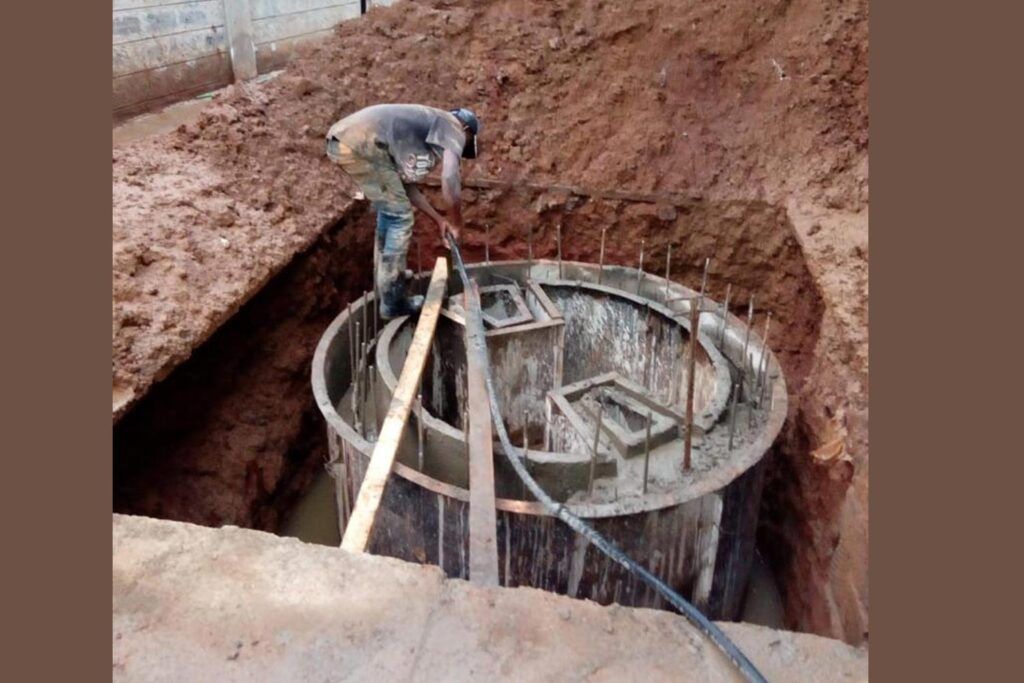98% of the new and existing built environment (residential, commercial, and industrial) in Kenya may be not connected to a sewer network. UN-Habitat estimates that by the year 2050, 50% of households in Eastern Africa will be located in urban areas. This presents a major problem for wastewater containment and treatment because investments in sewer infrastructure in Africa can hardly keep up with population growth.
Nairobi, the capital city of Kenya is a typical example of this. According to the 2019 census, the city had 4.5 million residents. At the time the city’s sewer infrastructure was built, it was designed to handle wastewater from 800,000 people – that means it is operating at over five times its original design capacity.
Buildings not served by sewer lines usually resort to on-site containment structures such as latrines and septic tanks. Containment structures need periodical emptying via manual or mechanized emptiers. Containment structures are prone to failure when overwhelmed by waste water volumes and/or when filled up with inorganic or non-biodegradable waste.
Failed containment structures risk contamination of underground water, a major problem because 36% of Kenyans depend on freshwater sources below ground. The implication here on-site structures need to do much more than just collect wastewater…they need to treat it before discharging it into the environment.
The Septic Biodigester
Wastewater consists of 98% water and 2% suspended and dissolved solids. By decomposing the organic matter in wastewater and filtering out the leftover particles, wastewater can be safely disposed of in the environment with no risks of contamination.
The infographic below illustrates how a septic biodigester works.

- Sewer water is discharged into the septic biodigester
- Solids separate from water – lighter solids (scum) float; heavier solids (sludge) sink.
- Water collects in the middle and rises through the outlet to the distribution box
- The distribution box
- Sludge & scum undergo accelerated decomposition. Up to 80% of solids are converted to Hydrogen Sulfide, Carbon dioxide, Methane and Water
- Water is discharged into the drain field, and further filtered before safe discharge into the ground
Septic biodigesters occupy 70% less space than conventional septic tanks and can safely operate for over 200 years before requiring extraction via emptiers/exhausters. They are built with concrete impregnated with inoculant to accelerate the decomposition process. A drain field effectively filters out whatever pathogens and impurities are left over in the wastewater before discharging the treated water into the ground.
According to the 2019 census, only 0.2% of structures built in Kenya opt for septic biodigesters.


Pingback: how to buy androxal buy virginia
Pingback: how to buy enclomiphene uk sales
Pingback: cheap rifaximin australia cheap
Pingback: how to buy staxyn without prescriptions canada
Pingback: ordering avodart generic efficacy
Pingback: 98144
Pingback: how to buy flexeril cyclobenzaprine generic a canada
Pingback: order dutasteride generic from canada
Pingback: online order gabapentin purchase online from canada
Pingback: get fildena australia online no prescription
Pingback: ordering itraconazole purchase generic
Pingback: how to order xifaxan generic online pharmacy
Pingback: ed meds kamagra